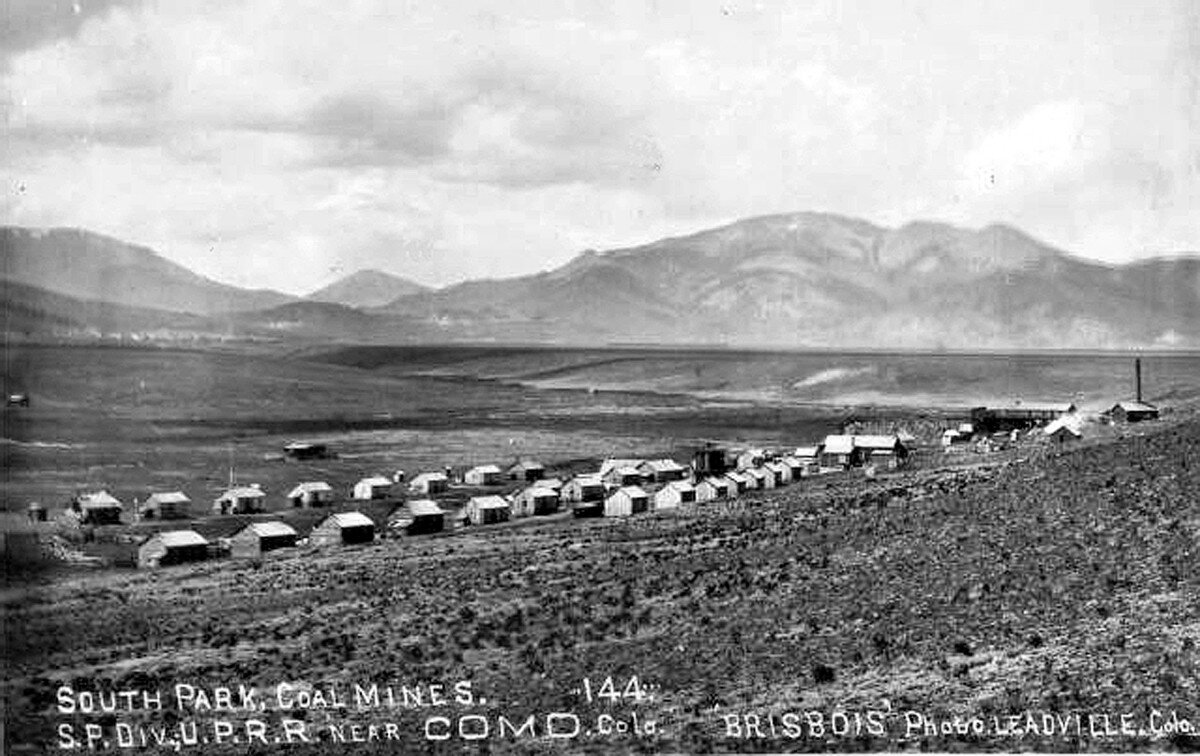In South Park, a microcosm for America's long history of xenophobia

FAIRPLAY, Colo. — “It is estimated that Chinese were driven out of over 200 communities in the American West,” said Dr. William Wei. A town in South Park, Colorado exhibited just one of these many instances in the late 1800s.
Dr. Wei is an author and an expert in modern Chinese history, which he teaches at the University of Colorado Boulder. He is also a member of Colorado’s State Historian Council. His latest book, “Asians in Colorado: A History of Persecution and Perseverance in the Centennial State,” focuses on the Asian American experience and the immense contributions of Asian Americans to the development of Colorado, and the West.
South Park—one of three “Parks” in Colorado—was designated as a National Heritage Area in 2009 to preserve its history and natural resources. The historic industries of mining and ranching can be seen in many of the structures and buildings around the area.
In the 1950s, an outdoor museum opened in Fairplay to preserve the history of the area. South Park City Museum has moved 37 buildings to the site, which now hosts over 60,000 artifacts.
When it first opened, the museum displayed a building repurposed to represent a gathering place for the once present and prosperous Chinese community, often referred to as a “tong house.” A few years later, the building was vandalized and many of its artifacts were stolen. The building sat empty until it was transformed into the homestead that exists today.
“The Chinese community here was, once upon a time, a thriving community,” said Dr. Wei to Erin Pulsipher, the museum’s curator.
The two talked in a dark corner of the museum only lit by the display case containing the few remaining artifacts that had survived the vandalism. One artifact, an intricate plate, was glued back together.

During the development of South Park, Chinese workers were considered cheap and steady labor were mainly recruited to the area for mining where they settled down in towns like Fairplay, Hamilton, and Como. They were instrumental in the mining industry.
“I think the record shows,” said Dr. Wei, “that the Chinese sought to be good citizens of the communities in which they lived.”
Despite this, he pointed out, “the Chinese experienced difficulties in the area, which was part and parcel of the larger anti-Chinese phenomenon of the period.”
Tensions between Chinese and Italian workers in the local coal mines outside of Como led to what became coined as the “Chinese-Italian war,” or “China-Italian war.” On November 9, 1879, a group of Italian workers attacked the Como Chinese community. While the Chinese were initially protected by their recruiter and mining management, 14 years later, arson and robbery would finally drive them from their homes, and out of town.

Dr. Wei points out that this event was a major trigger—fueled by biased media coverage—for subsequent events in Colorado, and the nation. On October 31, 1880, what was known as Denver’s anti-Chinese race riot took place. Denver’s Chinatown was destroyed and one man, Look Young, was murdered. His killer was never brought to justice.
The “Chinese question” grew larger and larger until the Chinese Exclusion Act was signed into law on May 6, 1882. Dr. Wei highlighted that this was the first time the U.S. banned the immigration of an entire ethnic or national group. It also remains the only law of its kind.
“This has been the experience of the Chinese who were in this area and it’s been part of a general pattern not just for the Chinese but for other Asians who have come to Colorado, the West, and the United States. It’s been, unfortunately, a reoccurring pattern where they have had to endure harassment, discrimination, and personal violence,” said Dr. Wei.
He also pointed out the reoccurring pattern of racializing disease and scapegoating during times of economic insecurity. The COVID-19 pandemic has brought to light the anti-Asian racism still present in the United States—and beyond.
According to the Center for the Study of Hate and Extremism at California State University San Bernardino, anti-Asian hate crimes have increased 145% in 2020. And a new report by Stop AAPI Hate discovered almost 3800 reported hate incidents in the last year.
Dr. Wei has invited Pulsipher to work with him on updating the exhibit. Where the museum lacks physical objects, Pulsipher aims to include stories of Chinese Fairplay residents during the turn of the 20th century in the exhibit.
Resources
To watch further:
- Colorado Experience: South Park City by Rocky Mountain PBS
- 140 years after race riot, Denver honors Chinese immigrants by Rocky Mountain PBS
To read further:
- Asians in Colorado: A History of Persecution and Perseverance in the Centennial State by Dr. William Wei
- Colorado responds to surge in crimes against Asian Americans
To listen further: